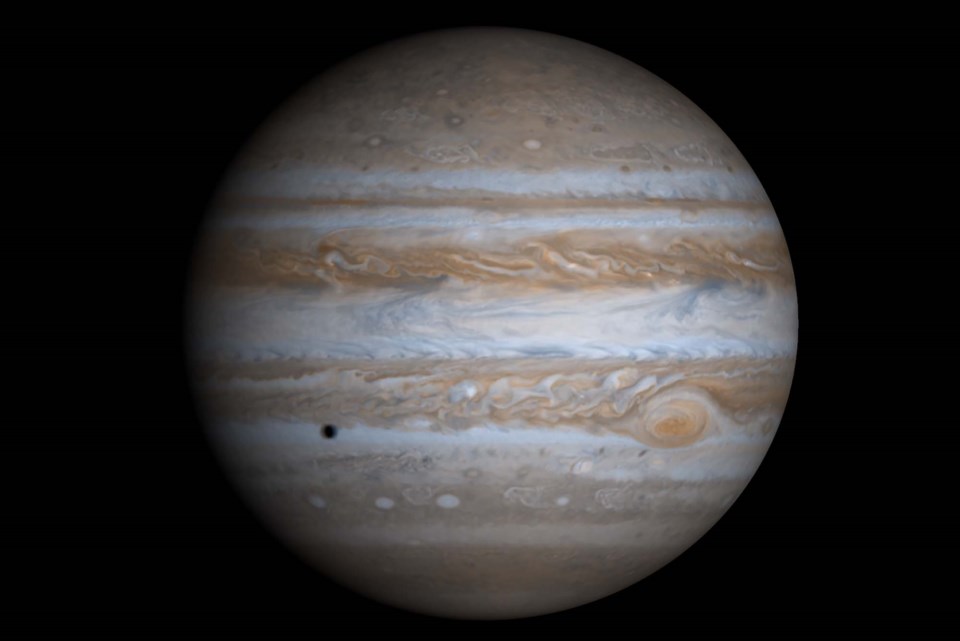Albertan astronomers will have their eyes skyward this week as they seek to get their best glimpse of Jupiter since 1951.
The planet Jupiter was a mere 591 million kilometres away from Earth on Sept. 26 — the closest it has been to this planet in 70 years.
Frank Florian, senior manager of planetarium and space sciences at the Telus World of Science Edmonton, said he and other area astronomers will be taking many pictures of Jupiter this month to take advantage of this event. Jupiter hasn’t been this close to Earth since Oct. 2, 1951, and won’t be this close again until Oct. 7, 2129.
“It’s the largest planet in our solar system, and right now it appears very, very brightly in our evening sky,” Florian said.
Jupiter and Earth have elliptical orbits and are closer to the Sun at some points in it than others, explained St. Albert astronomer Murray Paulson. Earth and Jupiter come closest to each other when they are in opposition, which is when Earth is between Jupiter and the Sun. Because Earth orbits the Sun 12 times faster than Jupiter, these oppositions happen about every 13 months, with the distance between the two planets varying based on where they are in their elliptical orbits.
Earth is headed out away from the Sun right now while Jupiter is heading towards it, Paulson said. On Sept. 26, the two planets were also in opposition, making them super close and Jupiter appear about 15 per cent bigger in the night sky.
This is not a difference most people would notice unless they have been taking regular pictures of Jupiter, Florian said. Still, this is an excellent time to take pictures of Jupiter, as it is high in the sky over Edmonton, which means less atmosphere to shoot through and clearer pictures.
It’s big
Jupiter is the biggest planet in the solar system, having about twice the mass of all the other planets combined, NASA reports. If Earth were the size of a grape, Jupiter would be the size of a basketball.
Jupiter is a “sun wannabee” in that it could have become a star if it had more mass, Florian said. Instead, it’s a gas giant composed of swirling masses of hydrogen, helium, ammonia, water, and some organic compounds. It has the second-strongest magnetic field in the solar system next to the Sun’s, and has aurorae at its poles.
Jupiter is known for its many surface storms, which you can see through a telescope, Paulson said. The most famous one is the Great Red Spot, which is twice the size of Earth and has been raging for over a century. The Great Red Spot has also visibly changed shape and colour over the years — Paulson said it is now smaller and more salmon pink than it was a few decades ago.
Jupiter has about 75 moons, the four largest of which can be seen with binoculars. Look closely, and you can even see these moons cast shadows over Jupiter, Florian said.
Researchers have seen sprays of what could be water being projected out from one of those moons, Europa, suggesting that it may have liquid water beneath its surface, Paulson said.
“Anywhere there’s water, there also could be life.”
Paulson said Jupiter will be the brightest star in the eastern sky over the Edmonton region this week, and will pass through the constellation Pisces.
Florian said residents will continue to have an excellent view of Jupiter for about a week after Sept. 26.



